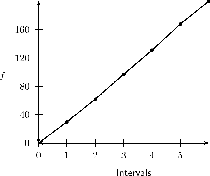| << Chapter < Page | Chapter >> Page > |
The measures of central tendency (mean, median, mode) and the measures of dispersion (range, semi-inter-quartile range, quartiles, percentiles, inter-quartile range) are numerical methods of summarising data. This section presents methods of representing the summarised data using graphs.
One method of summarising a data set is to present a five number summary . The five numbers are: minimum, first quartile, median, third quartile and maximum.
A box and whisker diagram is a method of depicting the five number summary, graphically.
The main features of the box and whisker diagram are shown in [link] . The box can lie horizontally (as shown) or vertically. For a horizonatal diagram, the left edge of the box is placed at the first quartile and the right edge of the box is placed at the third quartile. The height of the box is arbitrary, as there is no -axis. Inside the box there is some representation of central tendency, with the median shown with a vertical line dividing the box into two. Additionally, a star or asterix is placed at the mean value, centered in the box in the vertical direction. The whiskers which extend to the sides reach the minimum and maximum values.

Draw a box and whisker diagram for the data set
.
Minimum = 1,25
Maximum = 5,10
Position of first quartile = between 3 and 4
Position of second quartile = between 6 and 7
Position of third quartile = between 9 and 10
Data value between 3 and 4 =
Data value between 6 and 7 =
Data value between 9 and 10 =
The five number summary is therefore: 1,25; 2,5; 3,65; 4,775; 5,10.

Khan academy video on box and whisker plots
Cumulative histograms, also known as ogives, are a plot of cumulative frequency and are used to determine how many data values lie above or below a particular value in a data set. The cumulative frequency is calculated from a frequency table, by adding each frequency to the total of the frequencies of all data values before it in the data set. The last value for the cumulative frequency will always be equal to the total number of data values, since all frequencies will already have been added to the previous total. The cumulative frequency is plotted at the upper limit of the interval.
For example, the cumulative frequencies for Data Set 2 are shown in [link] and is drawn in [link] .
| Intervals | ||||||
| Frequency | 30 | 32 | 35 | 34 | 37 | 32 |
| Cumulative Frequency | 30 | 30 + 32 | 30 + 32 + 35 | 30 + 32 + 35 + 34 | 30 + 32 + 35 + 34 + 37 | 30 + 32 + 35 + 34 + 37 + 32 |
| 30 | 62 | 97 | 131 | 168 | 200 |

Notice the frequencies plotted at the upper limit of the intervals, so the points (30;1) (62;2) (97;3), etc have been plotted. This is different from the frequency polygon where we plot frequencies at the midpoints of the intervals.

Notification Switch
Would you like to follow the 'Siyavula textbooks: grade 11 maths' conversation and receive update notifications?